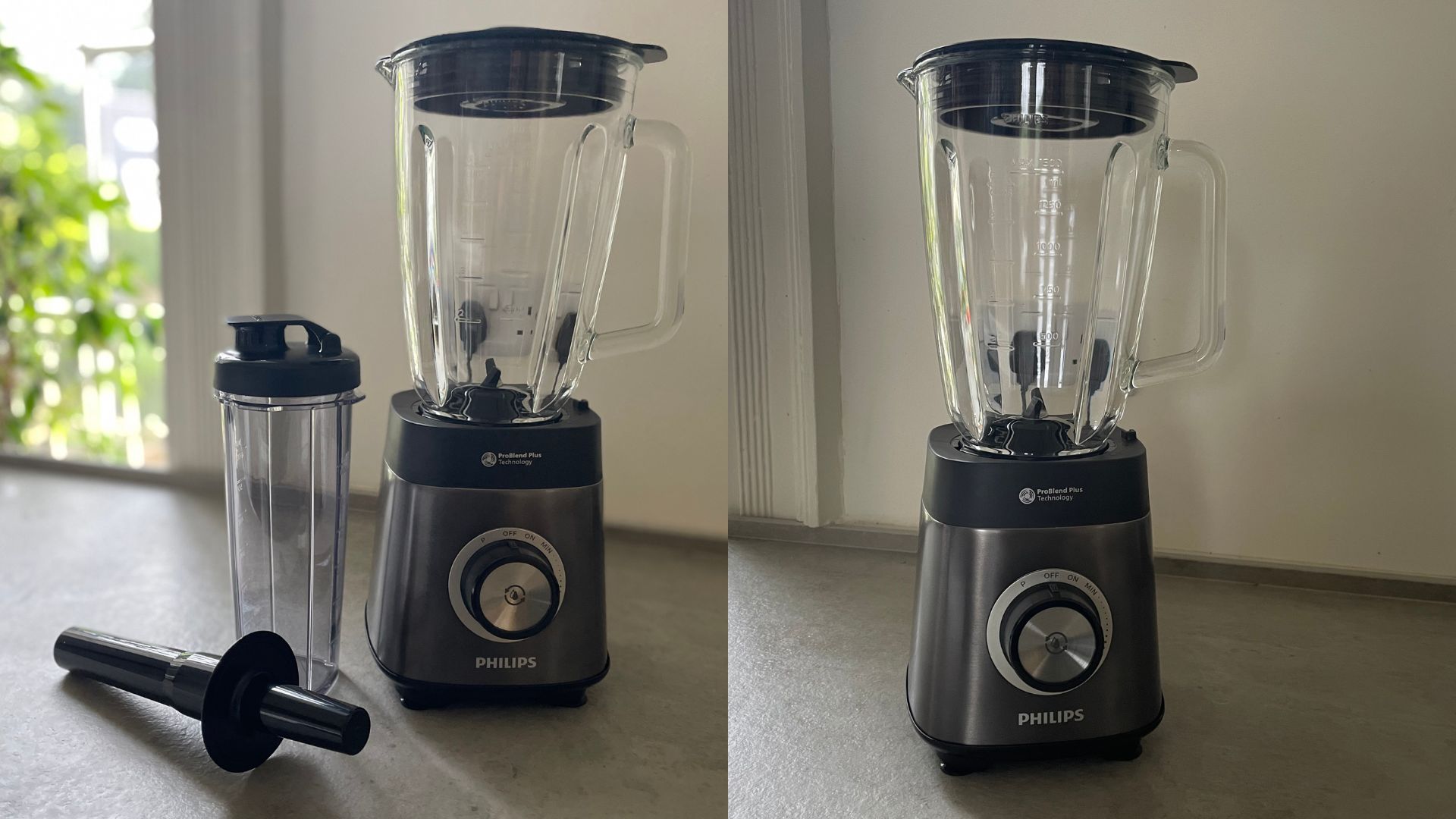
Philips have been a dab hand with all things home appliances for decades now. From their iconic lamps to their expert air fryers, if I see their name on a product, I general know that it’s going to be reliably good.
So, when the brand launched an inexpensive blender for under £100 (and sometimes even under £50), I was keen to put it against some of the best blender brands on the market to see where it sits.
After using it to make smoothies, protein shakes, crushed ice cones, hummus, and more, here’s everything you need to know about the cheapest blender that I've tested to date (and I've reviewed over 50).
Specifications
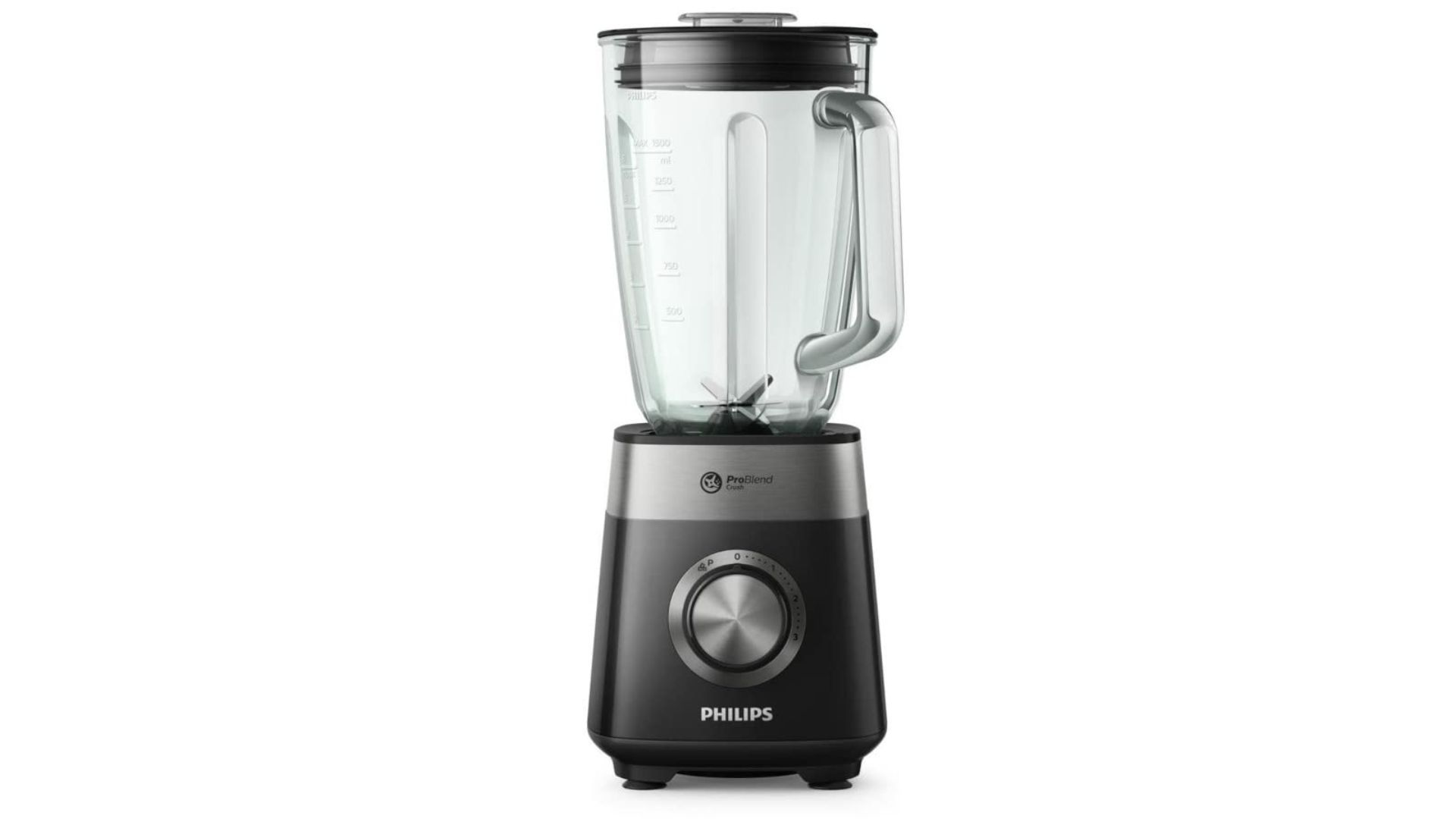
Unboxing and first impressions
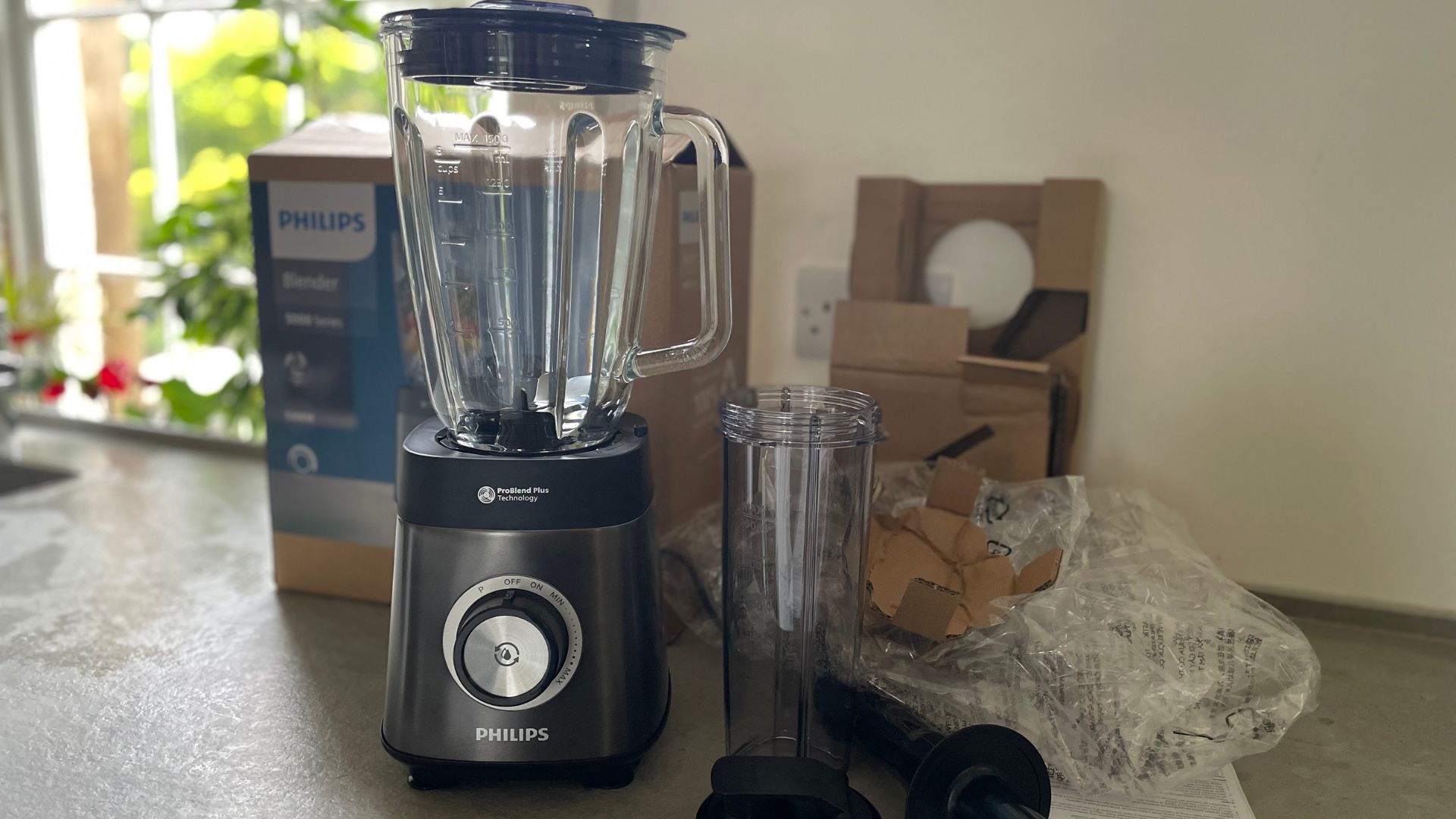
The Philips blender arrived in a smart, relatively compact box, with the blending base and glass jug, you’ll get a portable blending bottle and tamper to go with the blender, which is handy for taking to the gym or on your morning commute. I’ve given it the handbag test (putting a bottle of smoothie in my bag while it’s shaken, bumped, and thrown around) and it survived well. All in all, my first impressions of this blender were good.
Most of the packaging is cardboard, which means that it’s all easy to recycle and dispose of sustainably. There are some soft plastics wrapped around the jug and the bottle to stop them from scratching, but there are an increasing number of places that will recycle soft plastics for you these days, namely, supermarkets.
Who would it suit?
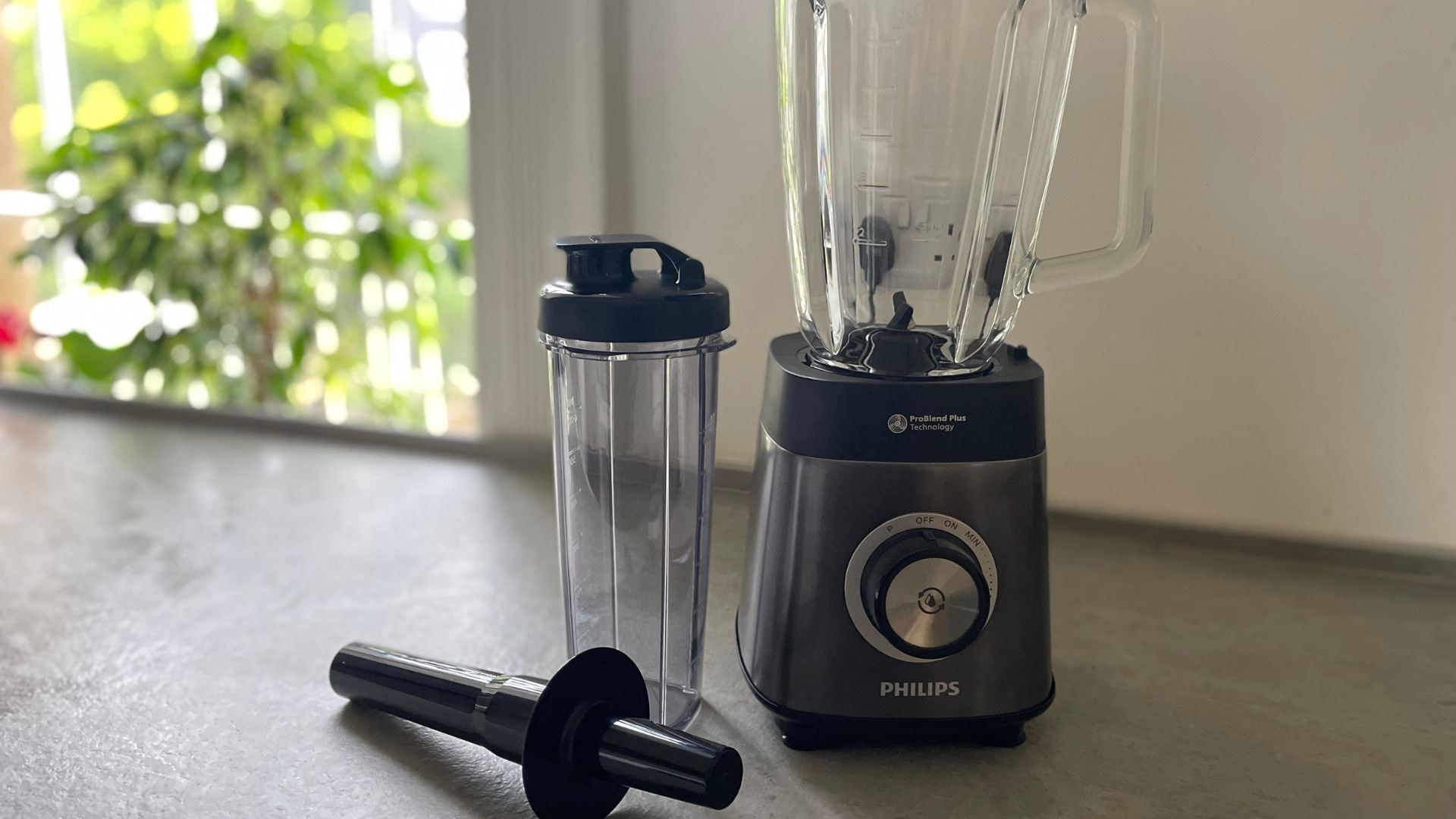
The Philips is at the cheap end of the blender market, which you might not expect at first glance. It stands tall, looks premium, and the thick glass jug feels premium too. the 2-litre capacity is more than enough to make smoothies for three people, or four at a stretch, so it’s best suited to couples, but it could cover a family of four at a push.
To some extent, you get what you pay for with the price. The controls are simple, there are no pre-sets, and the motor is noisy. However, for the price tag, I think these are some compromises worth considering. I’ll do a deeper dive on similar models around the same price point further down the article to give you a good idea of what other companies offer for the same price.
What is it like to use?
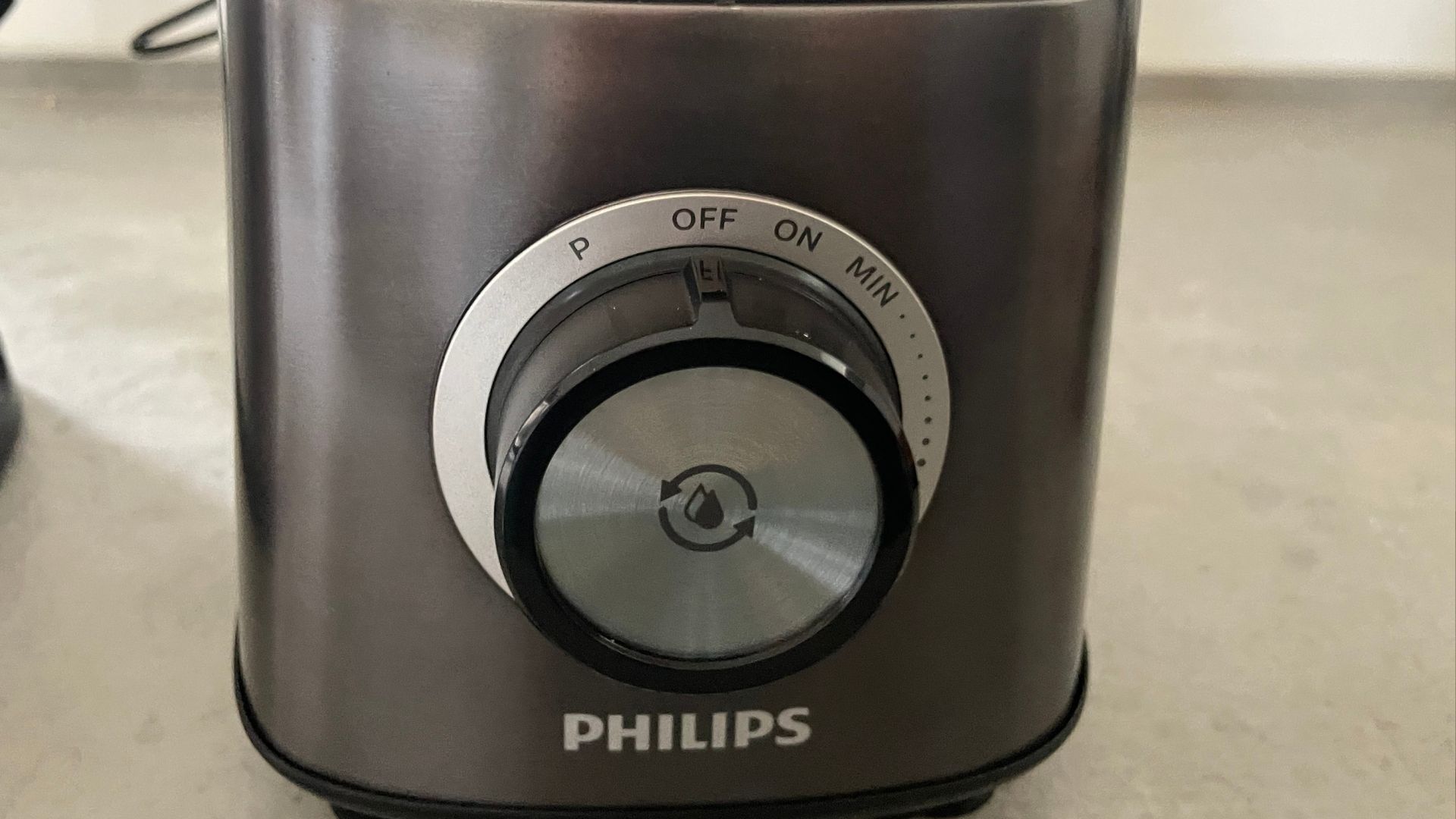
The big bonus of the Philips’ simplicity is that it’s easy to use. The dial takes you from ‘pulse’ through a range of different speed settings. I made sure to cover all of these whilst making hummus, smoothies, protein shakes, and ice cones. Here are the results.
Test 1: smoothies and protein shakes
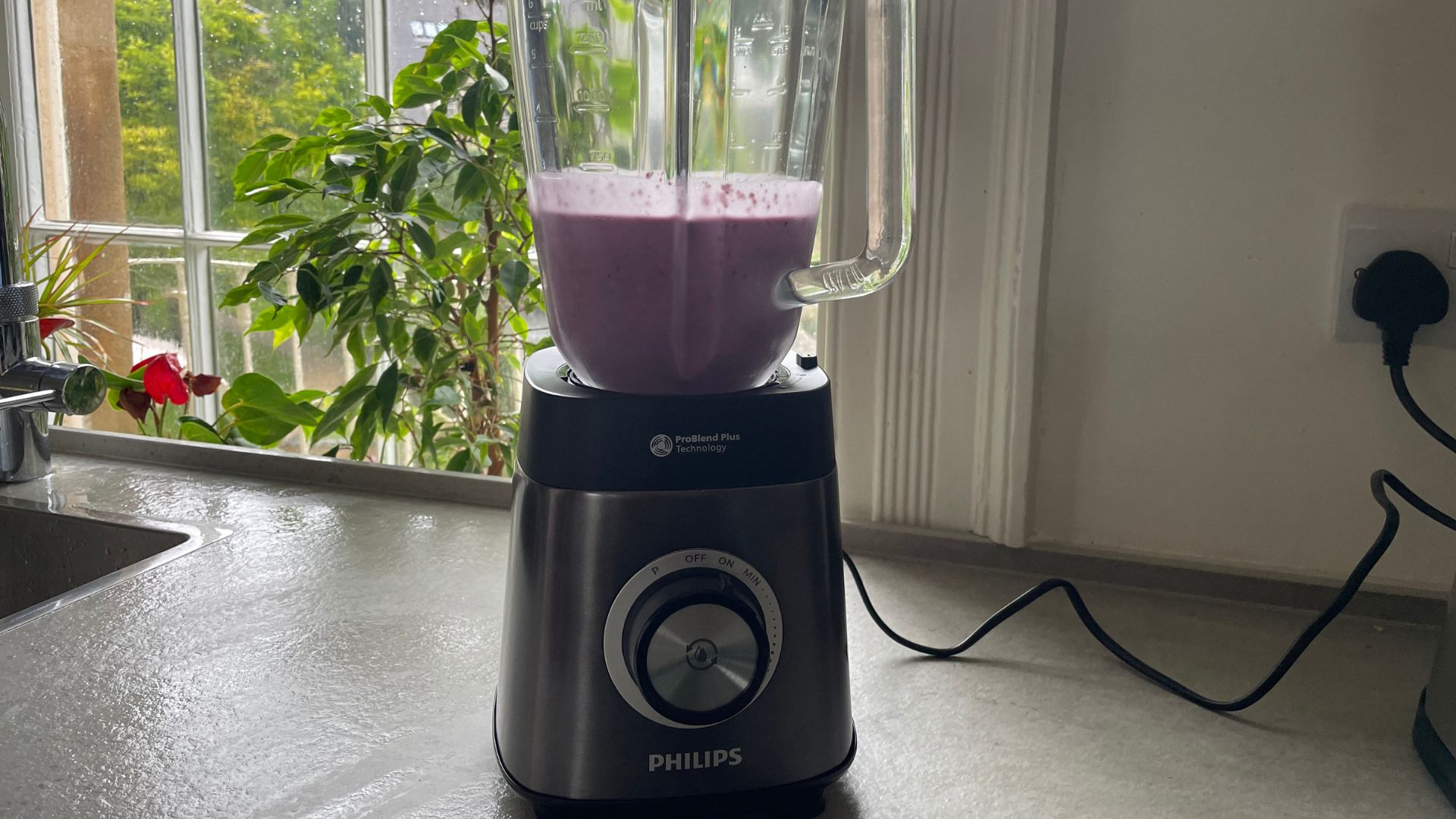
The first and, arguably the most important test that I put any blender through is making a smoothie and a protein shake. These tasks should be straightforward, but I try to give each blender a few curveballs. I’ll use frozen fruit instead of fresh since icy hard berries can be tricky to break down. I also threw in spinach, because the fibrous skins are difficult to whizz into nothing (nobody wants to know that they’re actually drinking spinach, do they?). I also added oats in too, since these offer some nice bulk to smoothies, but an extra texture challenge.
Once all the ingredients above and some almond milk were in the blender, I twisted the dial. I wanted to get a general idea of the noise levels for the Philips, so I ran it on low speed. It slowly churned up the fruit making a low, but distinct noise. Then, when I wanted to get it really running, I twisted the dial right around, letting it run at full blast. It’s noisy, almost as loud as having a hair dryer running, but I had my smoothie ready in 40 seconds, so it’s powerful. The Philips had done a wonderful job of whizzing all the ingredients into a delicious drink. If I hadn’t been testing a super premium, professional-grade blender beside it, I would have said the smoothie was perfect. However, compared to the silky smooth results of the xx, it had a slight graininess. You wouldn’t notice this if you didn’t ever own the upgraded model, but it’s worth noting.
After I’ve made a smoothie, I also make a protein shake. Adding a scoop of powder can ruin the results of even the best blenders. However, the Philips effortlessly integrated the protein powder with the rest of the smoothie. I tested this every morning for three weeks, so I feel confident that this can make the perfect protein shake and its talents probably extend to batters too.
Test 2: hummus and dips
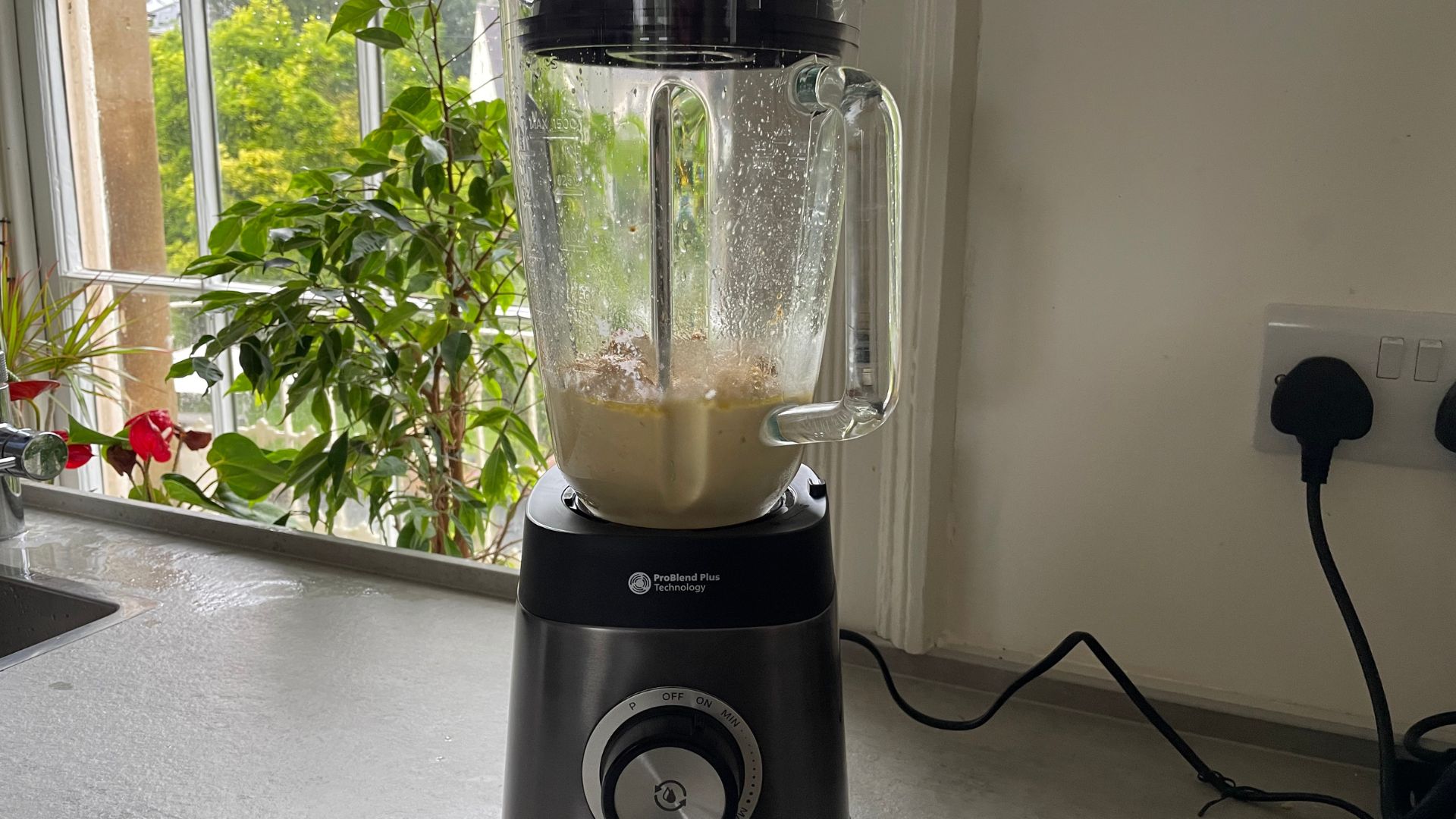
The next challenge I’ll put to any blender is making a dip. This is tougher than a smoothie in many respects, because you take out all of the water content that loosens up your ingredients, helping to get an even blend. I put a tin of chickpeas, tablespoon of tahini, some garlic, a squeeze of lemon, a teaspoon of salt, a teaspoon of smoothie, and some olive oil into the blender. Again, I started it on a low speed and then worked up to high speeds. I had to stop relatively frequently to mix the hummus around because the blades didn’t quite create the necessary vortex that would draw my hummus towards them. After a few minutes of scooping and blending, I decided the Philips had probably done its best. The hummus was serviceable, but I’ve definitely made better. What I had in my blending jug was scoopable, it tasted like hummus, and it had a nice feel in the mouth, but it was a bit too chunky and thick to pass as anything other than homemade. I actually quite like a thicker hummus, but if you’re all about the silky smooth texture, you’ll need to look at some other options.
Test 3: crushing ice
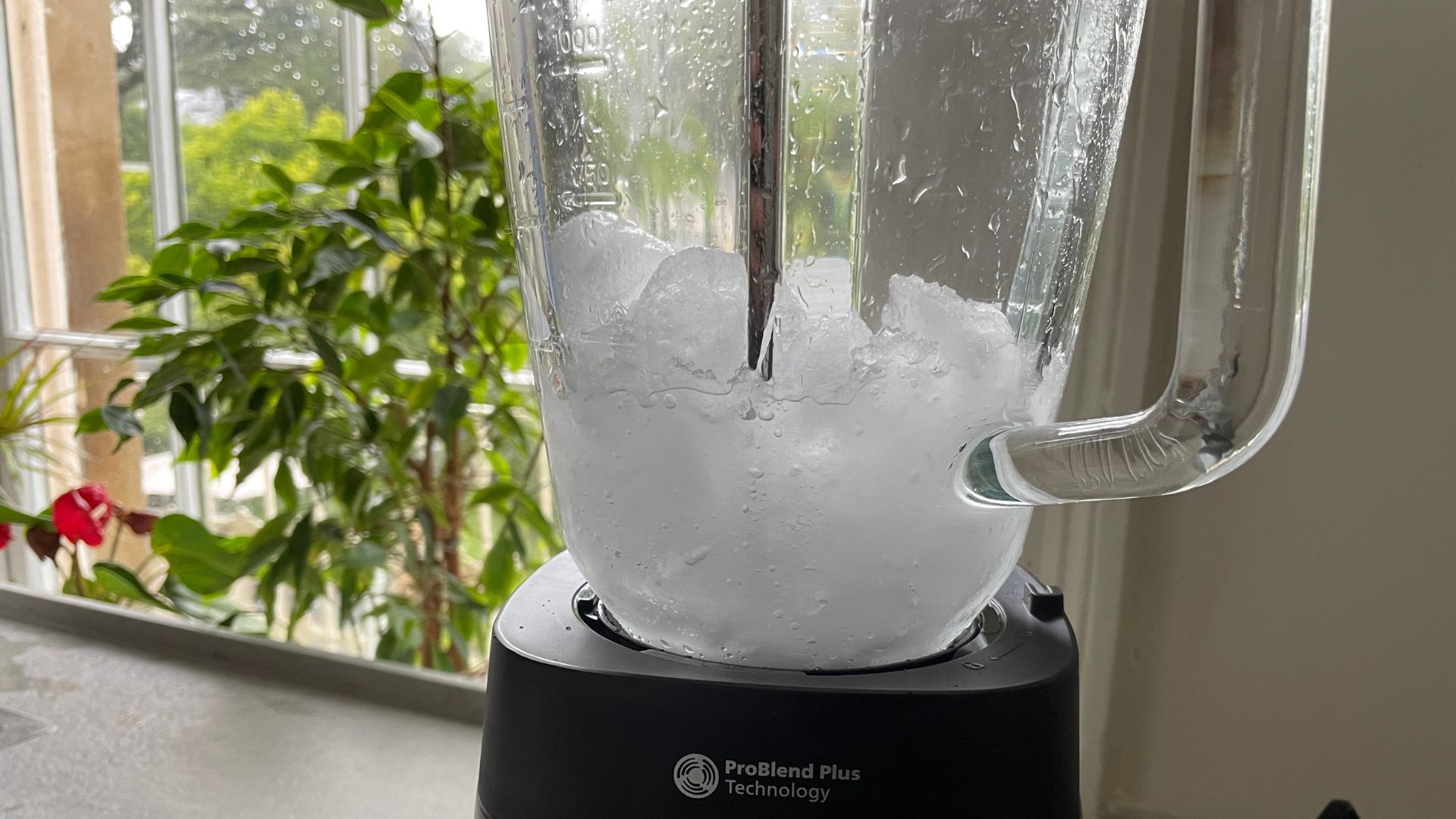
The final test I put all blenders through is crushed ice. I collected up a handful of ice cubes and put them in the pitcher with a splash of water. Both the pulse function and the high speed function worked hard to chip off some bits of ice from the ice cubes, but the overall result was a little underwhelming. Given how loud this is, I don’t think you would want it running for a long time, but this doesn’t quite have the power to list ice like a Vitamix. It bit a time job of frozen fruits, so there’s no major cause for concern in general day-to-day use, but if you want to make ice cones or frozen cocktails, you might need to look at the alternative, more expensive models on the market.
Cleaning
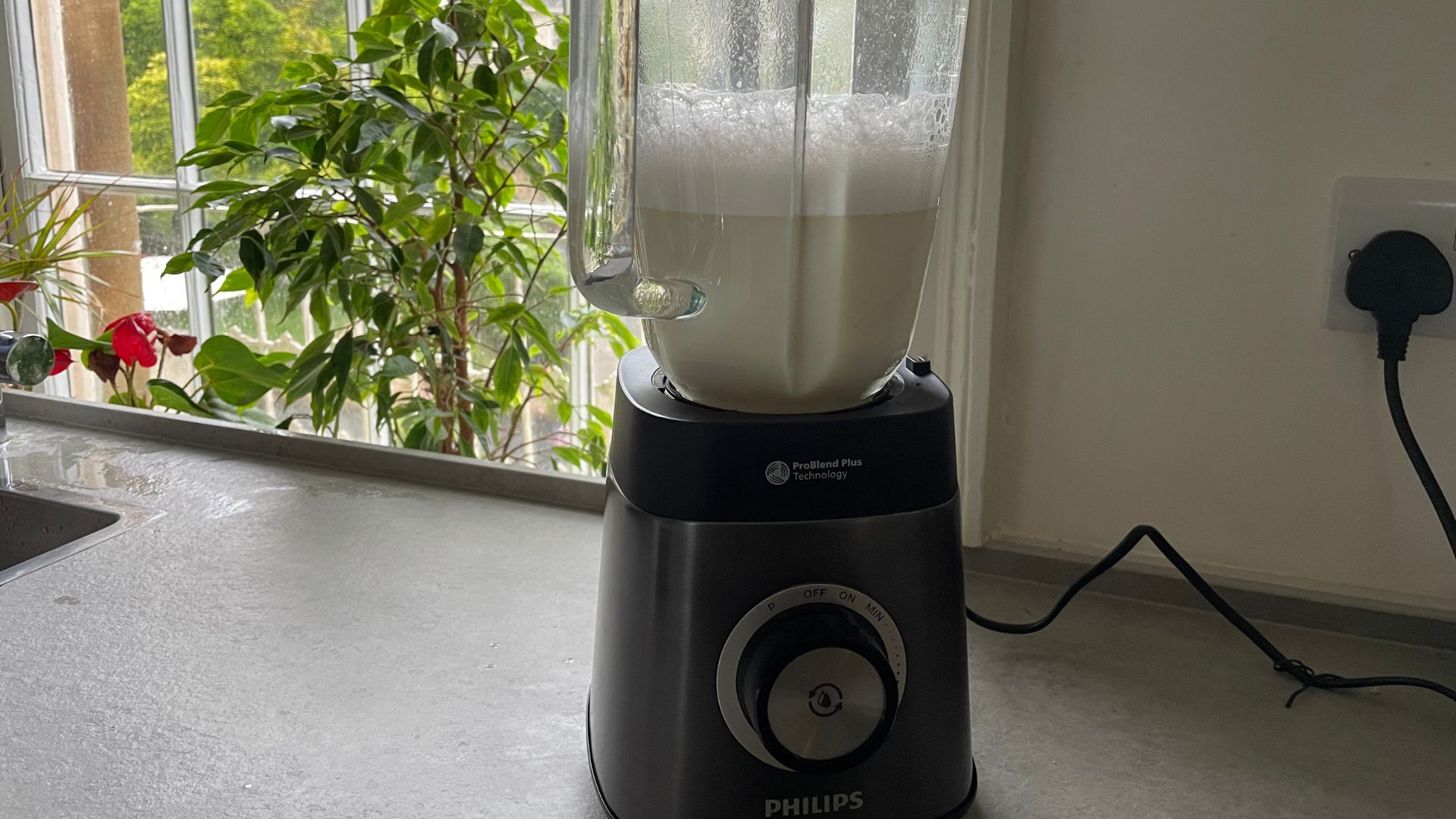
The pitcher is dishwasher safe, which is great news if you don’t like spending too much time at the sink. It’s quite tall, so you’ll want to make sure that you have space in the bottom rack of your dishwasher, but mine cleaned up well. Even the portable smoothie bottle came out of the dishwasher sparkling, so, all in all, it was a successful run.
I also tried popping hot water and a squirt of washing-up liquid in the pitcher, which worked well too. The controls might need a wipe if your hands get messy when you’re blending smoothies, but this won’t happen every time. For the most part, the Philips keeps itself very clean.
How does it compare?
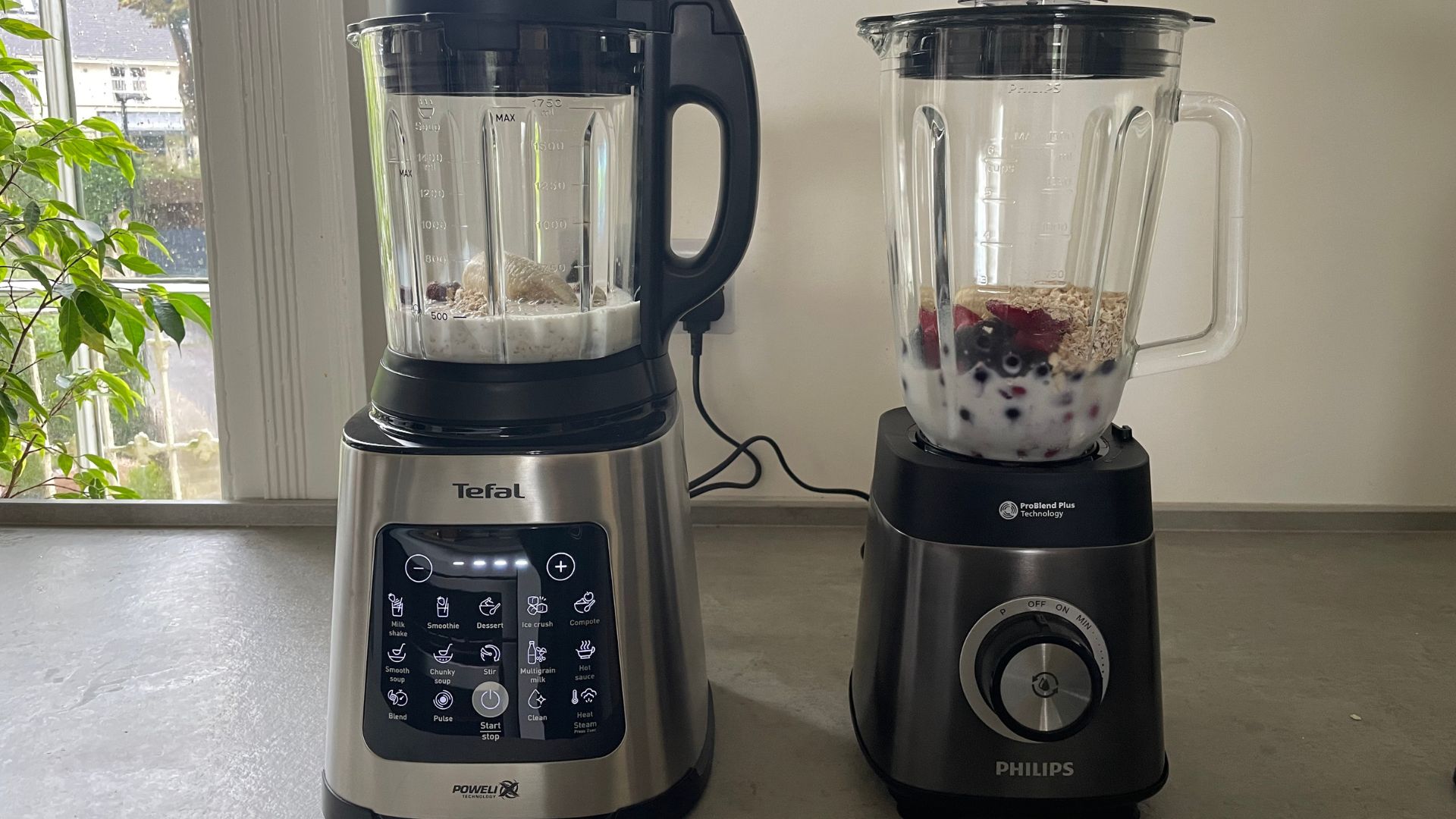
You won't get many pitcher blenders for under £100, so most comparable models to the Philips 5000 Series are personal, portable blenders that aren't nearly as powerful or as big as the 2l glass jug on the Philips. That means that the Philips pitcher blender really only comes up against the Nutribullet, for price, size, and performance.
Nutribullet's blenders work a little differently to pitcher blenders. You turn the bottle upside down and push down on the blender. This system works really well for smoothies, especially because the blending cup can be easily transformed into a portable cup or smoothie bottle, saving on washing up. The downside of this shape is that Nutribullets (and bullet blenders in general) will struggle to blend the food at the very top if there's a low liquid content in your smoothie, dip, or ice cone. If I thought the Philips' hummus was chunky, the Nutribullet's is even chunkier. The Philips is definitely more versatile and you get the choice of different speed settings. It's more appropriate as a generic kitchen blender that can tackle a range of tasks, whilst the Nutribullet is a smoothie specialist.
If you like the idea of a more versatile blender and you can make some room in the budget, I'd recommend the Ninja Foodi Hot + Cold Blender. On a good day, this will only cost you another £30 and you'll get a model that can heat and blend soup, make sauces, jams, and sorbets as well as your classics. It's bigger, but that isn't always better, especially if you have a smaller kitchen. Ultimately, you know what you need. If you're making smoothies for the family as well as the odd dip, the Philips is perfect. For more complex tasks, opt for the Ninja. For easy, simple designs, go for the Nutribullet.
Should you buy it?
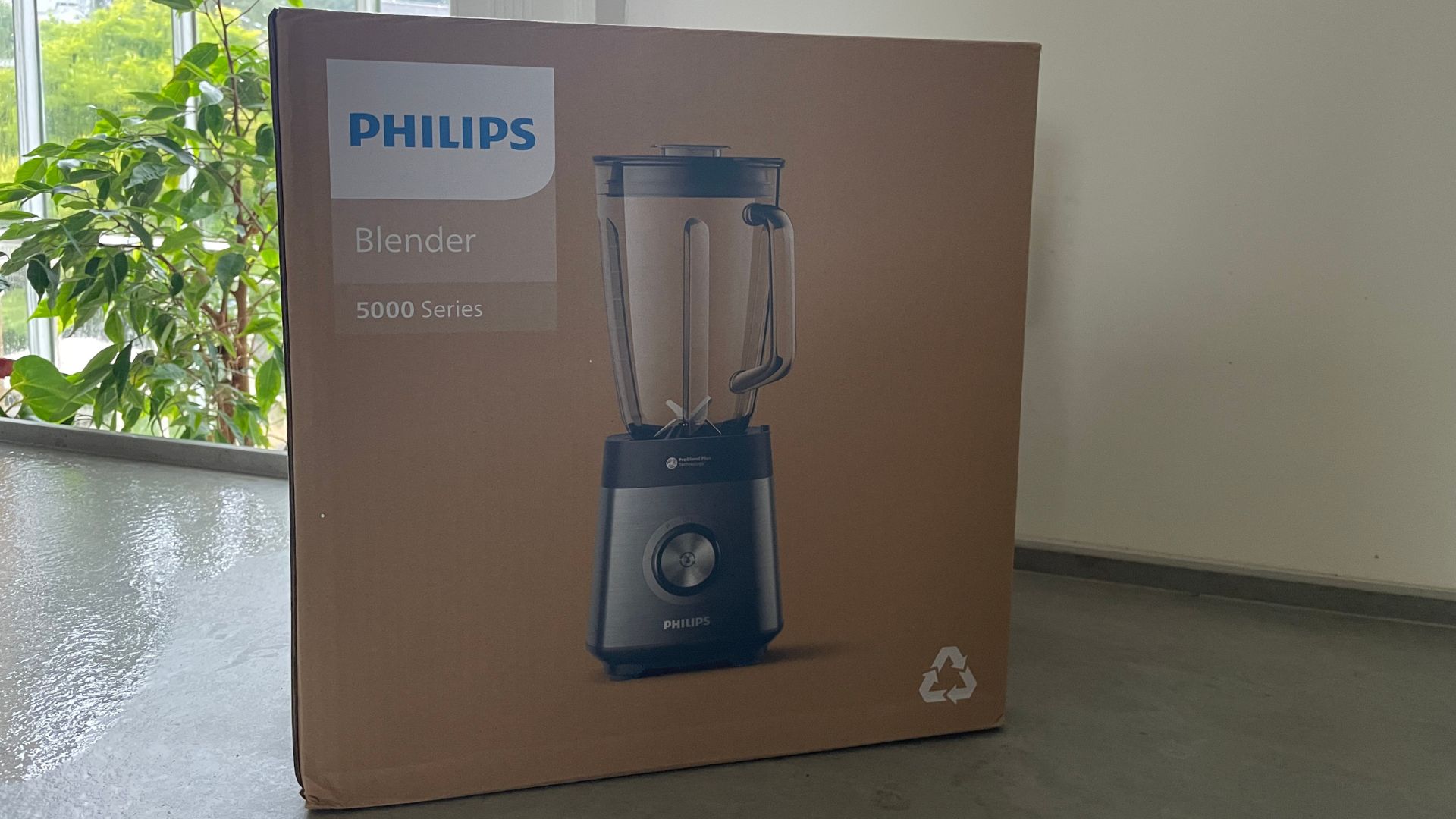
If you're in a squeeze and you want a cheap, simple blender for your morning smoothie, this is perfect for you. I would recommend the Philips 5000 Series Blender to beginners and then the Ninja Foodi Hot + Cold to more ambitious chefs.
How we test
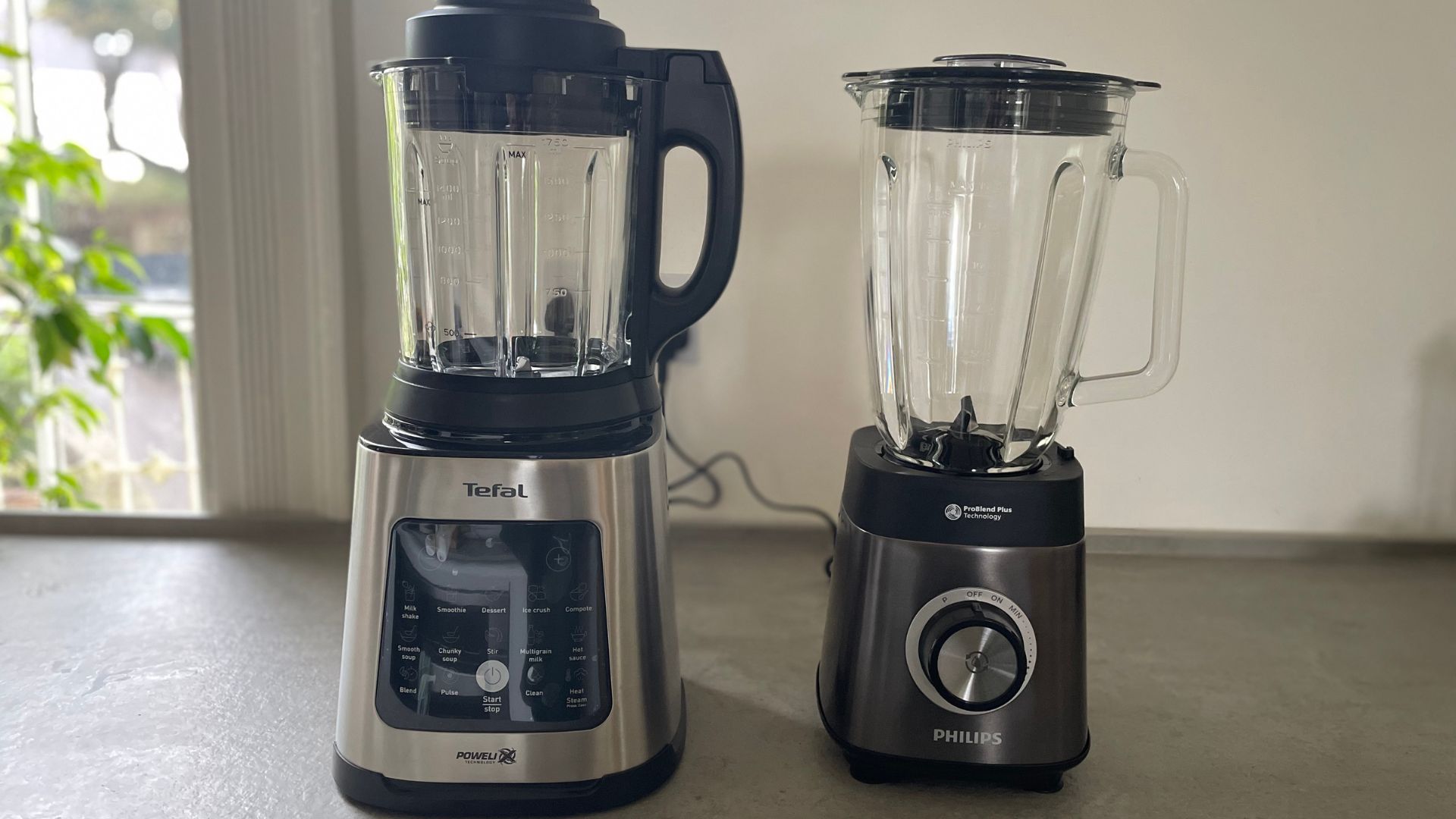
At woman&home, we follow a thorough process for how we test blenders. I use three key tests for every blender we recommend. The first is making a smoothie, which is a must-have feature for any blender. I use frozen fruit, which is both tough and seedy, along with spinach and oats for their fibrous texture. If the blender can turn this into a smooth drink, it passes the test with flying colours.
Next, I test the blender's ability to make hummus. With its lower water content, hummus is harder for some blenders to process into a smooth consistency. Though not an everyday recipe, this test is crucial for assessing a blender’s ability to handle thick mixtures, like smoothie bowls or pastes.
The final test involves crushing ice, which many blenders struggle with. Only a few can crush ice into fine crystals, but I always include this step to challenge the machine.
If a blender comes with additional functions, I make sure to try them as well. For example, when testing the Braun, I made soup using the soup setting, but some models also have settings for ice cream or milkshakes. Throughout all these tests, I assess the blender’s noise level, ease of use, design, and how it stacks up against others I’ve reviewed.
I'll give you a detailed review of where each blender stands in the market, factoring in value for money and suitability for your needs. My goal is to help you make an informed decision. I always give you my honest opinion, ensuring you know if there’s a better option available. For my top picks, you can refer to our best blender buying guide.







